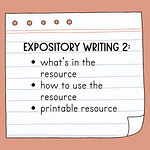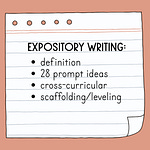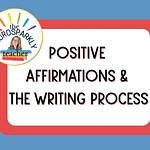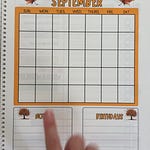Let’s have a chit chat about reading fluency, or I guess I’ll be having this chit chat with the keys on my keyboard.
What is reading fluency?
Reading fluency is how well a kid reads automatically and accurately.
When we talk about automaticity, we don’t mean can a kid speed read their way through this task, but rather how easily can the kid read the words in this text? Their pacing obviously indicates how automatically they can read the words on the page, but we’re not looking for them to blow through it.
When we talk about accuracy, we want to know whether a kid gives up entirely on reading a word, reads some of the word but gets the ending sounds incorrect, says an entirely different word than the one in that spot, or tries to decode and gets the sounds wrong. The kind of errors we’re hearing can inform our future instruction.
Why does it matter?
Consider that if your brain is using up a lot of its power trying to accurately and smoothly read words, then it’s losing critical power for making meaning from those words on the page.
More fluid reading = more brain space for understanding what was read.
Think of reading comprehension like a dish you want to cook. Fluency is one the ingredients that makes that dish taste like Rice Krispie treats instead of Rice Krispies.
How can we assess reading fluency?
We have kids read aloud so that we can track their accuracy and automaticity. If you see the acronym ORF, it stands for oral reading fluency.
How To:
Give them a passage at their current level based on what they’ve been taught.
Have a copy of the text in front of you.
Start timer when they start reading.
Time for one minute. (They might not finish the passage.)
Make notes on words dropped, added, read incorrectly (and how), not read within 3 seconds.
Record the total number of words they read in one minute, the number of errors, and the number of words correct per minute.
Consult fluency norms chart to see what percentile they’re in based on their grade. If you want to see fluency norms based on grade level, you can find it here at Reading Rockets.
What do we do with different ages?
The kind of fluency practice you provide depends on skill and age levels. Here’s the progression. Remember that just because a kid makes it to the paragraph level doesn’t mean you can’t continue word-level fluency as well.
Youngest learners can practice fluency at the alphabet level and the letter-sound level.
Then fluency can be tracked at the word level. (You can continue with this word-level fluency as they age and do it with grade-appropriate words.)
Sentence level
Paragraph level
What do we do with that data (ie how do we teach it)?
If your data shows that all of their words were read correctly, or they made only very few errors, but they still aren’t in the 50th percentile (or you want to move beyond 50th percentile), then give more practice with reading aloud at their current skill level. You could do this once a week or twice a month.
Repeated Reading = they cold read a passage while you time them & mark errors, you then provide direct instruction about their specific errors, then they read again to see if they can read more smoothly & correctly, and you can do one last reading. More than three is kind of beating a dead horse.
Echo Reading = they do a cold read, you read aloud as a fluent reader to model reading aloud the passage, they echo your fluent reading by reading again
Combined = (basically have them read one more time after they echo you)
If your data shows that they had a handful or more of errors, you want to examine what kind of errors they made. From there, do you need to re-teach a skill? Provide more practice spelling and reading that kind of word? Play games to practice? Use this information to see what errors need to be corrected for their future reading.
What does it look like for us?
8 year old: we use UFLI phonics, and their curriculum includes supplemental passages and fluency checks. I use both of these to monitor her progress. If you want to see the UFLI fluency checks, you can find them here on their site! (Scroll down to compiled lesson resources.) I do this at least 2-3x a month.
10 year old: we use Megawords, and their curriculum includes passages at the end of every unit. Her passages also ask comprehension questions! She tracks her own fluency on a graph. I also do fluency checks at the word-level with her; she tracks this on a different graph. I do each of these once a month.
I hope you found this post useful!









